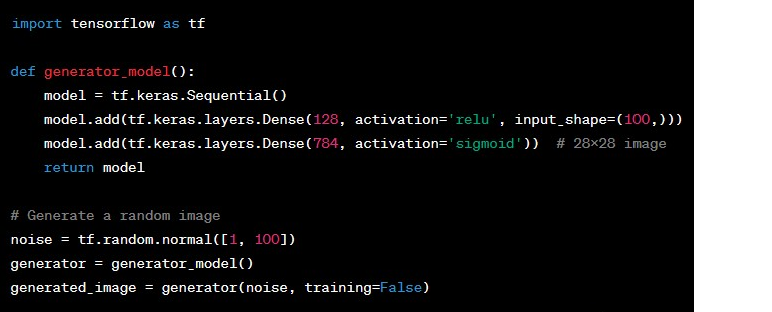Artificial Intelligence Imagery: A Scholarly Examination of the Complexities and Mechanisms of GANs
GANs have demonstrated their prowess at crafting lifelike data. They offer potential in diverse domains, from image crafting to pharmaceutical innovations.
Join the DZone community and get the full member experience.
Join For FreeIn an era where digital imagery comes alive and artistic expressions are shaped by algorithms, have you ever taken a moment to appreciate the wonder of AI transforming simple phrases into vibrant visuals? Or looked at an aged photograph, only to see it rejuvenated into a sharp, clear memory? At the core of this technological marvel, within the realms of deep learning, exists a captivating duo - the Generative Adversarial Networks, commonly known as GANs.
Picture two artists: one, an innovator, conjuring worlds from fleeting ideas; the other, a realist, distinguishing fact from fiction. The innovator, our Generator, spins stories from randomness, while the realist, our Discriminator, evaluates their genuineness. In a blend of collaboration and competition, they refine each other's skills. The innovator's creations become so realistic that even the most astute realist is deceived.
This interplay between code and imagination, between creation and evaluation, forms the essence of GANs. It's a junction where creativity meets technology, where dreams intersect with reality, and where history is revived in the now.
Understanding GANs
GANs are a subset of AI algorithms made up of two neural networks — the Generator and the Discriminator. They are trained in tandem in a game-like setting, where the Generator produces data, and the Discriminator assesses it.
• Generator
The Generator's role in a GAN is to fabricate data. It uses random noise as a starting point and generates samples that ideally mirror real data. Its main goal is to craft data so authentic that the discriminator finds it hard to distinguish it from genuine data.

Example: In a situation where we aim to produce images of handwritten numbers, the generator uses random noise to generate an image resembling a handwritten number.
• Discriminator
The Discriminator in a GAN acts as a binary classifier, determining if a sample is genuine (from the actual dataset) or fabricated (by the generator). It assigns a likelihood to each sample's being real. Its objective is to correctly label genuine data as real and fabricated data as false.

Example: Referring to the handwritten number example, once the generator crafts an image, the discriminator evaluates it. If the image closely resembles a handwritten number, the discriminator might deem it genuine. Otherwise, it's labeled as fabricated.
The allure of GANs is rooted in this dynamic, where the Generator persistently refines its data-crafting process while the Discriminator sharpens its differentiation skills.
How GANs Operate
Visualize an art counterfeiter (Generator) attempting to replicate a Picasso masterpiece. Conversely, there's an art investigator (Discriminator) aiming to identify the imitation. At first, the counterfeiter's skills might be rudimentary, making the investigator's job straightforward. But as their duel progresses, the counterfeiter's skills enhance, and the investigator becomes adept at spotting the fakes. Eventually, the counterfeiter's skills peak, making it nearly impossible for the investigator to differentiate between genuine and fake.
This dynamic encapsulates the GANs' modus operandi. The Generator refines its data based on the Discriminator's feedback until the crafted data closely resembles genuine data.
GAN Applications
- Image Crafting: GANs can craft high-definition images. For example, NVIDIA designed a GAN capable of generating lifelike facial images of non-existent individuals.
- Data Enhancement: GANs can expand datasets, especially when real-world data is scarce.
- Artistic Style Adaptation: GANs can modify images in specific artistic styles, morphing photos to resemble renowned artworks.
- Art Creation: GANs have been employed by artists and developers to innovate new art forms. GAN-created art has even garnered attention at art auctions.
- Image Resolution Enhancement: GANs can amplify image resolution, enhancing clarity. This is especially valuable in satellite and medical imaging.
- Pharmaceutical Innovations: GANs find applications in the pharmaceutical sector to identify potential drug compounds.
- Voice Synthesis: GANs can craft voice recordings and are integral to voice synthesis mechanisms.
- Gaming Environment Design: Game developers employ GANs to design lifelike gaming settings.
- Anomaly Identification: GANs can spot data anomalies, which is crucial in areas like fraud detection.
GAN Challenges
Training Stability: Training GANs can be intricate due to challenges like mode collapse, leading to limited sample variety.
Performance Assessment: Evaluating GANs is complex as there's no definitive metric to gauge the quality of crafted samples.
Conclusion
GANs have demonstrated their prowess at crafting life-like data. They offer potential in diverse domains, from image crafting to pharmaceutical innovations. However, they present unique challenges, and ongoing research aims to address these and enhance GAN capabilities.
Opinions expressed by DZone contributors are their own.

Comments